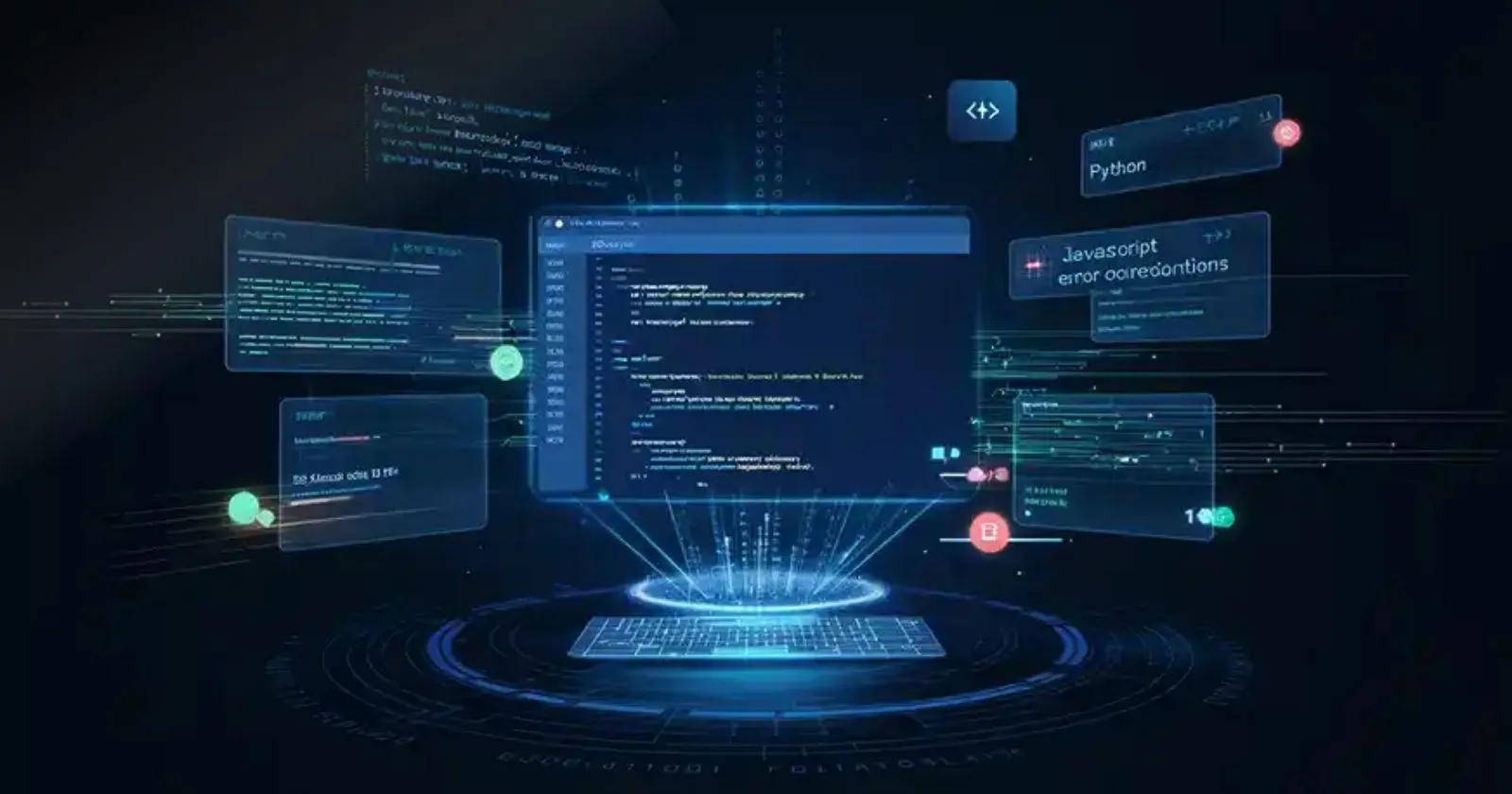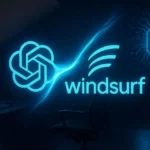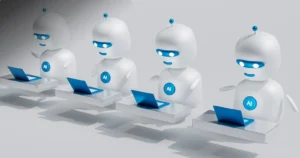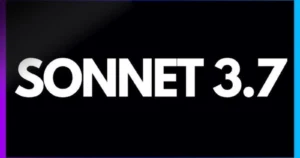Windsurf AI vs Traditional Programming: The Future of Development in 2025
The software development landscape is undergoing a profound transformation as AI-powered tools like Windsurf challenge traditional programming paradigms. This shift promises dramatic improvements in developer productivity and code quality.
As we navigate through 2025, the distinctions between AI-assisted development with tools like Windsurf and conventional programming approaches have never been more significant. This comprehensive comparison examines how Windsurf AI is reshaping development workflows and what this means for developers at all skill levels.
Table of Contents
- Windsurf AI vs Traditional Programming : Strengths and Limitations
- Manual Coding and Its Inherent Challenges
- Traditional IDE Capabilities
- The Windsurf Approach: AI Flow Programming
- The AI Flow Paradigm: Beyond Assistants and Agents
- Experience the AI Flow Revolution
- Key Differences Between Windsurf and Traditional Programming
- 1. Code Generation and Modification Process
- 2. Development Speed and Productivity
- 3. Learning Curve and Knowledge Requirements
- 4. Code Quality and Consistency
- Practical Use Cases: When Each Approach Shines
- Optimal Scenarios for Traditional Programming
- Windsurf’s Transformative Impact on Common Development Tasks
- Revolutionize Your Development Workflow
- Real-World Impact: Productivity and Quality Metrics
- Development Speed and Time Savings
- Code Quality and Maintainability Improvements
- The Evolution of Developer Skills
- Traditional Programming Skills vs. AI-Era Skills
- The Future Developer Profile
- The Hybrid Future: When to Use Each Approach
- A Balanced Development Workflow
- Decision Framework: Choosing the Right Approach
- Getting Started with the AI Programming Transition
- Transitioning from Traditional to AI-Assisted Development
- Training Tips for AI-Assisted Development
- Conclusion: The New Era of Software Development
- Frequently Asked Questions
- Does AI-assisted development with Windsurf reduce the need for programming knowledge?
- How does code quality from Windsurf AI compare to manually written code?
- Will traditional programming skills become obsolete with AI tools like Windsurf?
Windsurf AI vs Traditional Programming : Strengths and Limitations
Before diving into how Windsurf transforms development, let’s examine the conventional programming approach that has dominated software engineering for decades:
Manual Coding and Its Inherent Challenges
Traditional programming typically involves developers manually writing every line of code, with limited assistance beyond syntax highlighting and basic autocompletion. This approach has several defining characteristics:
- High cognitive load – Developers must maintain extensive mental models of code structure and logic
- Steep learning curves – Mastering languages and frameworks requires significant time investment
- Repetitive tasks – Implementing boilerplate code and standard patterns consumes valuable time
- Limited guidance – Solutions often require external research across documentation and forums
While this approach has produced remarkable software over decades, it has inherent inefficiencies that limit developer productivity and can introduce inconsistencies in code quality.
Read also : Vision of Windsurf CEO on Coding’s Future
Traditional IDE Capabilities
Conventional integrated development environments offer helpful but fundamentally limited assistance:
- Static analysis – Code checks based on predefined rules rather than contextual understanding
- Basic autocompletion – Simple suggestions for variable names and method signatures
- Fixed templates – Predetermined snippets that require manual customization
- Documentation lookups – References that developers must manually search and interpret
These tools provide value but still leave the heavy lifting of development squarely on the developer’s shoulders.
The Windsurf Approach: AI Flow Programming
Windsurf AI represents a paradigm shift in development methodology through its revolutionary AI Flow approach. Rather than simply offering enhanced features within the traditional programming model, it fundamentally transforms the relationship between developer and development environment.
The AI Flow Paradigm: Beyond Assistants and Agents
Windsurf’s core innovation is its AI Flow concept, which creates a unique collaborative relationship between developer and AI:
- Mind-meld experience – The AI and developer work simultaneously on the same codebase state
- Dual-mode capability – Combines both agent capabilities (independent task completion) and copilot functions (collaborative assistance)
- Continuous contextual awareness – Maintains understanding across files, sessions, and development phases
- Natural language interaction – Allows expression of intent in plain language rather than specific commands
This approach transforms programming from a solo activity into a collaborative partnership between human creativity and AI capabilities.
Experience the AI Flow Revolution
Ready to transform your development workflow? Try Windsurf AI for yourself and experience the future of programming today.
WebDest readers receive bonus features when signing up through our referral link!
Key Differences Between Windsurf and Traditional Programming
Let’s explore the specific differences between Windsurf AI and traditional programming across various dimensions:
1. Code Generation and Modification Process
| Traditional Programming | Windsurf AI Programming |
|---|---|
| Manual typing of all code with simple autocompletion | AI-powered generation of entire functions, components, or files from natural language descriptions |
| Changes require explicit implementation by the developer | Intelligent suggestions for improvements with one-click implementation options |
| Refactoring tools limited to predefined operations | Context-aware refactoring that understands code semantics and project structure |
| Multi-file changes require manual coordination | Coherent changes across multiple files while maintaining consistency |
This fundamental shift in code creation reduces the mechanical aspects of programming, allowing developers to focus on higher-level design and problem-solving.
2. Development Speed and Productivity
One of the most striking differences between traditional programming and AI-assisted development with Windsurf is the acceleration of common development tasks:
- Boilerplate reduction – Windsurf can generate standard code patterns in seconds versus minutes of manual typing
- Implementation velocity – Features that might take hours in traditional programming can be completed in minutes
- Reduced context switching – Less need to search documentation or Stack Overflow for solutions
- Streamlined debugging – AI can identify and explain issues, then suggest or implement fixes
Studies suggest that developers using AI-assisted tools like Windsurf can achieve 2-5x productivity improvements compared to traditional manual coding approaches, with the gap widening for certain types of tasks.
Read also : Complete Guide to the Windsurf AI Editor for Beginners
3. Learning Curve and Knowledge Requirements
The approaches differ significantly in terms of what developers need to know to be productive:
| Traditional Programming | Windsurf AI Programming |
|---|---|
| Requires memorization of language syntax and APIs | Focuses on conceptual understanding with AI handling syntax details |
| Must learn complex IDE shortcuts and commands | Natural language instructions replace memorized commands |
| Stack-specific knowledge critical for productivity | AI can provide stack-specific recommendations and implementations |
| New technologies require significant learning investment | AI helps bridge knowledge gaps when working with unfamiliar technologies |
This shift doesn’t eliminate the need for technical knowledge, but it changes the focus from memorization to conceptual understanding and problem-solving skills.
4. Code Quality and Consistency
The quality of resulting code also differs substantially between approaches:
- Error prevention – Windsurf proactively identifies potential bugs and edge cases as code is written
- Standardization – AI maintains consistent patterns across the codebase automatically
- Best practices – Suggestions incorporate current industry standards and best practices
- Documentation – Automated generation of comprehensive comments and documentation
While experienced developers can produce high-quality code manually, Windsurf helps eliminate inconsistencies and oversights that commonly occur during manual development, especially in larger projects with multiple contributors.

Practical Use Cases: When Each Approach Shines
Both traditional programming and AI-assisted development have scenarios where they excel:
Optimal Scenarios for Traditional Programming
Despite the advantages of AI assistance, traditional programming approaches still have valuable application scenarios:
- Low-level systems programming – When working close to hardware with strict constraints
- Highly specialized domains – Areas where AI models may lack sufficient training data
- Legacy system maintenance – When working with outdated technologies that AI has limited exposure to
- Educational contexts – When the learning objective is to understand fundamental principles
These scenarios leverage the precision and control of manual coding, which remains important for certain specialized tasks.
Windsurf’s Transformative Impact on Common Development Tasks
Windsurf particularly excels in several areas that constitute the majority of development work:
- Application development – Web, mobile, and desktop applications across common frameworks
- API implementation – Creating and documenting service interfaces and data models
- Full-stack development – Coordinating changes across frontend and backend components
- Data processing pipelines – Implementing ETL processes and data transformations
- Testing and quality assurance – Generating comprehensive test suites and scenarios
These areas benefit tremendously from Windsurf’s contextual understanding and ability to implement complex patterns efficiently.
Revolutionize Your Development Workflow
Join the thousands of developers who have transformed their productivity with Windsurf AI. Experience the difference for yourself today.
Real-World Impact: Productivity and Quality Metrics
The transition from traditional programming to AI-assisted development with Windsurf yields measurable benefits across key performance indicators:
Development Speed and Time Savings
Research and user feedback indicate significant time savings when using Windsurf compared to traditional programming:
- Feature implementation – Average time reductions of 40-60% for common features
- Boilerplate code – 80-90% reduction in time spent on repetitive code patterns
- Documentation – 70% faster generation of code comments and documentation
- Bug fixing – 30-50% faster identification and resolution of issues
These productivity gains compound over time, allowing development teams to deliver more features or complete projects with fewer resources.
Code Quality and Maintainability Improvements
Beyond speed, Windsurf also enhances the quality of resulting code:
- Bug reduction – Studies show 15-30% fewer bugs in production compared to manually written code
- Readability – Consistent formatting and clear documentation improve maintainability
- Best practices – Automated incorporation of security and performance best practices
- Technical debt – Reduction in accumulated shortcuts through consistent patterns
These quality improvements reduce long-term maintenance costs and enhance the overall reliability of software products.
The Evolution of Developer Skills
As AI-assisted programming becomes more prevalent, the skills that make developers successful are evolving:
Traditional Programming Skills vs. AI-Era Skills
| Traditional Era Focus | AI Era Focus |
|---|---|
| Syntax memorization and typing speed | Problem formulation and clear expression of intent |
| Implementation details and patterns | Architecture design and system thinking |
| Mastery of specific languages and frameworks | Adaptability across multiple technology stacks |
| Code writing proficiency | Code review and critical evaluation skills |
This shift doesn’t make technical knowledge obsolete but rather changes how developers apply that knowledge and what aspects they need to prioritize in their skill development.
The Future Developer Profile
Tomorrow’s most successful developers will blend traditional programming knowledge with new skills for the AI era:
- AI collaboration fluency – Effectively directing AI tools through clear communication
- Conceptual modeling – Ability to translate business needs into well-structured problems
- Quality assessment – Critically evaluating AI-generated code for correctness and efficiency
- Systems thinking – Understanding complex interactions between components
These evolving skill requirements create both challenges and opportunities for developers at all career stages.
Read also : Using Windsurf AI Inside Cursor for Hybrid Productivity
The Hybrid Future: When to Use Each Approach
The most effective development strategy in 2025 combines both AI-assisted and traditional programming approaches based on the specific task at hand:
A Balanced Development Workflow
Rather than viewing Windsurf and traditional programming as mutually exclusive, consider them complementary tools in your development toolkit:
- Architecture and design – Use traditional thinking with AI brainstorming support
- Core algorithms – Combine manual implementation with AI optimization
- Application scaffolding – Leverage AI for rapid generation of standard components
- Integration work – Use AI to manage complex connections between systems
- Testing and validation – Manual test planning with AI-generated test implementations
This balanced approach maximizes productivity while maintaining appropriate control over critical system aspects.
Decision Framework: Choosing the Right Approach
When deciding between traditional programming and Windsurf AI for a specific task, consider these factors:
- Task complexity – AI excels at implementing well-defined patterns but may struggle with novel algorithms
- Domain specificity – Consider whether the task relates to commonly available knowledge or highly specialized domains
- Performance requirements – Critical low-level optimizations may require manual implementation
- Learning objectives – Consider whether understanding implementation details is important for the task
By thoughtfully applying both approaches where they add the most value, developers can achieve optimal results across diverse project requirements.
Getting Started with the AI Programming Transition
If you’re primarily experienced with traditional programming, here’s how to effectively incorporate Windsurf AI into your workflow:
Transitioning from Traditional to AI-Assisted Development
Follow these steps to smoothly integrate Windsurf into your existing development process:
- Start with familiar tasks – Begin using Windsurf for routine operations where you can easily validate results
- Explore in phases – Gradually incorporate more complex AI assistance as you build confidence
- Refine communication skills – Practice clearly expressing your intent to the AI assistant
- Review generated code thoroughly – Maintain a critical eye to ensure quality and learn from AI approaches
- Experiment with workflow patterns – Find the optimal balance of manual and AI-assisted development for your style
This incremental approach allows you to build comfort with AI assistance while maintaining productivity throughout the transition.
Training Tips for AI-Assisted Development
To maximize your effectiveness with Windsurf AI:
- Be explicit about context – Provide clear information about project requirements and constraints
- Use iterative refinement – Start with general requests and progressively add specificity
- Learn effective prompting – Study techniques for clearly communicating intent to AI tools
- Create project-specific memories – Use Windsurf’s memory feature to maintain consistent context
- Combine natural language with code examples – Provide sample code to guide AI output when needed
These practices help establish effective communication patterns with the AI assistant, improving the quality and relevance of its contributions.
Read also :Windsurf Pro Features: Advanced Tools for Power Users
Conclusion: The New Era of Software Development
The comparison between Windsurf AI and traditional programming reveals not just technological differences but a fundamental shift in how software is created. We’re witnessing the emergence of a new programming paradigm that blends human creativity and expertise with AI capabilities.
While traditional programming skills remain valuable, the most successful developers will be those who effectively harness AI collaboration to amplify their capabilities. This evolution promises not only increased productivity but potentially higher quality software and greater accessibility to development for those with diverse backgrounds and skill sets.
As we move further into this new era, the question isn’t whether to adopt AI-assisted development, but how to optimally integrate it into our workflows to deliver better software more efficiently. Windsurf AI represents one of the most compelling visions of this future—a future where the partnership between human developers and AI creates possibilities that neither could achieve alone.
Ready to experience the future of programming today? Download Windsurf AI using our referral link and begin your journey into the new era of software development.
Frequently Asked Questions
Does AI-assisted development with Windsurf reduce the need for programming knowledge?
No, Windsurf doesn’t eliminate the need for programming knowledge but rather changes how that knowledge is applied. While AI assistance reduces the need to memorize syntax and boilerplate patterns, developers still need solid understanding of programming concepts, software architecture, and problem-solving approaches. In fact, effectively directing AI tools often requires a deeper conceptual understanding to properly frame problems and evaluate generated solutions. Think of Windsurf as amplifying your capabilities rather than replacing your expertise—the most effective developers combine strong fundamentals with AI fluency.
How does code quality from Windsurf AI compare to manually written code?
When properly guided, Windsurf-generated code often exhibits higher consistency and adherence to best practices than manually written code, especially for routine implementations. The AI incorporates patterns from millions of code examples, resulting in standardized approaches that include proper error handling, security practices, and optimization techniques. However, for highly specialized or novel problems, human expertise remains crucial for reviewing and refining AI suggestions. The ideal approach combines Windsurf’s consistency and breadth of knowledge with human developers’ creativity and domain-specific expertise.
Will traditional programming skills become obsolete with AI tools like Windsurf?
Traditional programming skills aren’t becoming obsolete but are evolving in their application. Core competencies like algorithmic thinking, system design, and debugging remain essential, but developers now need fewer low-level implementation details memorized. The future belongs to developers who can effectively collaborate with AI—clearly communicating requirements, critically evaluating generated code, and focusing their expertise on high-level architecture and novel problem-solving. Rather than obsolescence, we’re seeing a shift toward developers spending more time on creative and strategic aspects of software development while leveraging AI for mechanical implementation tasks.
Read also : Hosting Bot Explained: Keeping Your Discord Bot Online





